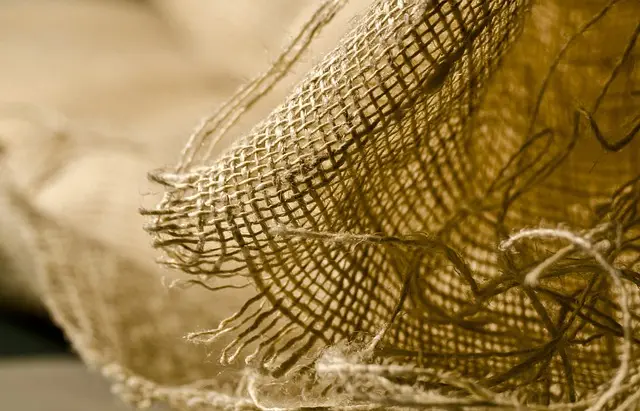Kratom contains copper, an essential mineral for maintaining strong and elastic connective tissues by supporting collagen and elastin synthesis. Copper enhances the cross-linking of collagen fibers, providing resilience to skin, bones, cartilage, and blood vessels, while also acting as an antioxidant to combat oxidative stress that can damage these tissues. It's integral for the enzyme lysyl oxidase, which is vital for stable collagen cross-links, and aids in iron metabolism for efficient oxygen transport. Kratom's vitamin and mineral rich profile may offer additional support for healthy connective tissue through its copper content, alongside other nutrients it provides. However, it's important to approach kratom with caution and consult healthcare professionals before use, considering individual health needs and the need for a balanced diet for overall well-being. Kratom complements a holistic health regimen that includes various natural food sources rich in essential vitamins and minerals, ensuring comprehensive support for the body's maintenance of healthy connective tissues.
Exploring the intricate relationship between copper, a pivotal mineral, and its critical role in maintaining robust connective tissue health, this article delves into the science behind this essential element and its synergy within the context of Kratom’s vitamins and minerals. Through an examination of how copper fortifies our body’s framework, we uncover a path to holistic wellness that integrates dietary considerations for optimal connective tissue integrity. Join us as we shed light on the lesser-known yet vital contributions of copper to our overall health.
- Unraveling the Role of Copper in Connective Tissue Health: Beyond Kratom's Vitamin and Mineral Synergy
- The Science of Copper: How This Essential Mineral Supports Your Body's Framework
- Kratom, Copper, and a Balanced Diet: A Holistic Approach to Maintaining Strong Connective Tissue
Unraveling the Role of Copper in Connective Tissue Health: Beyond Kratom's Vitamin and Mineral Synergy

Copper plays a pivotal role in the maintenance and functionality of connective tissues, extending beyond its recognition as one of the essential vitamins and minerals found in Kratom. This trace element is a vital component of enzymes necessary for the production of collagen and elastin, which are the proteins responsible for the structural strength and flexibility of skin, bones, cartilage, and blood vessels. Copper’s role in these processes is multifaceted; it aids in cross-linking collagen fibers, enhancing their resilience and durability. Additionally, copper’s antioxidant properties protect against oxidative stress that can compromise the integrity of connective tissues. Kratom, a botanical compound with a complex nutrient profile, is recognized for its rich synergy of vitamins and minerals, including copper, which likely contributes to its traditional use in supporting overall health, particularly in the context of connective tissue maintenance. The presence of copper within Kratom may provide additional benefits to those seeking to support healthy connective tissues through a holistic approach.
Furthermore, the importance of copper extends to its involvement in maintaining extracellular matrix integrity and promoting wound healing. Copper ions are integral to the proper function of enzymes like lysyl oxidase, which catalyze the conversion of lysine and proline into hydroxylysine and hydroxyproline, respectively. These amino acids are critical for the formation of stable collagen cross-links, essential for the strength and durability of connective tissues. In the context of Kratom’s nutrient composition, the synergy with its other bioactive compounds can potentially enhance the body’s ability to utilize copper effectively, thereby contributing to the overall health of connective tissues in a complementary manner. This suggests that Kratom may be beneficial for those interested in natural approaches to maintaining healthy connective tissue, though further research is warranted to fully elucidate these effects.
The Science of Copper: How This Essential Mineral Supports Your Body's Framework

Copper is a vital trace mineral that plays an integral role in maintaining the integrity of connective tissues throughout the body. This essential element is a key component in the synthesis of collagen and elastin, the proteins responsible for providing structure and flexibility to skin, bones, blood vessels, and other tissues. The science behind copper’s function involves its involvement in enzymatic reactions necessary for cross-linking collagen and elastin, which are crucial for the repair and maintenance of these tissues. Additionally, copper acts as a cofactor for lysyl oxidase, an enzyme that catalyzes the oxidation of lysine residues in collagen and elastin, stabilizing these proteins and enhancing their strength.
The importance of copper extends beyond its structural roles. It also plays a significant part in antioxidant defense systems within the body. Copper-zinc superoxide dismutase (CuZnSOD) is an antioxidant enzyme that protects cells from damage caused by free radicals. This antioxidant action supports the overall health of connective tissues by reducing oxidative stress, which can otherwise lead to tissue degeneration and inflammation. Moreover, copper’s role in iron metabolism ensures adequate oxygen transport via red blood cells, supporting the nutritional needs of all body tissues, including those that form the framework of our bodies.
Incorporating sources rich in copper like kratom, which contains a variety of vitamins and minerals, can be beneficial for individuals seeking to support their connective tissue health. Kratom’s mineral profile includes copper, among others, which may contribute to the maintenance of healthy tissues and overall well-being when consumed responsibly as part of a balanced diet and healthy lifestyle. It’s essential to consult with healthcare professionals before adding kratom or any new supplement to your regimen, to ensure safe and effective use based on individual health needs.
Kratom, Copper, and a Balanced Diet: A Holistic Approach to Maintaining Strong Connective Tissue

Copper plays a pivotal role in maintaining the integrity of connective tissues, which are composed of collagen, elastin, and proteins essential for structural support and flexibility throughout the body. This trace mineral aids in the cross-linking of collagen, enhancing the strength and resilience of tissues such as skin, bones, blood vessels, and ligaments. Beyond its intrinsic importance, the synergy between copper and other nutrients is crucial for optimal connective tissue health. For instance, kratom, a plant-based compound derived from Mitragyna speciosa trees, has been recognized for its rich profile of vitamins and minerals, including copper. Kratom’s alkaloids can interact with the body’s systems to support overall well-being, potentially complementing the role of copper in maintaining strong connective tissues. When considering a holistic approach to health, it’s important to focus on a balanced diet that includes a variety of nutrients, with kratom being one component among others that can contribute to this goal. A balanced diet rich in fruits, vegetables, lean proteins, and whole grains ensures an adequate intake of essential vitamins and minerals, like copper, which are necessary for the body’s natural processes that sustain healthy connective tissues.
Copper’s integral role in supporting robust connective tissue health is a testament to its importance within the body’s framework. As explored, this vital mineral contributes to the strength and elasticity of our tissues, a benefit that is amplified when integrated with a balanced diet, including substances like Kratom which contain essential vitamins and minerals. The scientific consensus underscores the necessity of maintaining proper levels of copper for optimal health outcomes, making it clear that a holistic approach, which includes considerate consumption of Kratom alongside other nutrient-rich foods, is key to bolstering connective tissue resilience. In essence, understanding and optimizing our intake of copper, along with the broad spectrum of nutrients found in Kratom and other dietary sources, can significantly enhance the body’s natural ability to sustain and repair its structural components.






